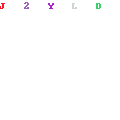Re: Food and what we take in
Hari Om
~~~~~

Originally Posted by
saidevo

From Mahabharata
A Brahmin (priest) should abstain from meat. -- The Mahabharata Anusasana Parva, Section XCIII
The sin of eating meat is ascribed to three causes. That sin may attach to the mind, to words, and to acts. It is for this reason that men of wisdom who are endued with penances refrain from eating meat. -- The Mahabharata, Anusasana Parva, Section CXIV
Well-dressed, cooked with salt or without salt, meat, in whatever form one may take it, gradually attracts the mind and enslaves it. -- The Mahabharata, Anusasana Parva, Section CXIV
Namaste,
We have talked often of the notion of eating meat. My initial post said
The notion of sattvic food extends beyond the the nourishment of the 6 tastes in Ayurved.
The notion of 'food' and 'eating' in the ved extends to all the senses. That is, what we take in. Food is considered ahara or what is brought near to us. It has come to be called food as we ingest it.
As I am reading the Mahabharata, and the information above offered by saidevo, I thought I would add to this. What is my purpose? It is surely not to try and convince anyone of changing their diet, but to offer what the wise say on this matter.
In the Anusasana Parva, section CXV ( or section 115) Yudhishtrhira³ asks Bishma² a few questions.
He says, you ( Bishma) have informed me many times that the abstention from injury is the highest religion. Yet in sraddhas, however, that are performed in honour of the Pitris, persons for their own good should make offerings of diverse kinds of meat.
- How can meat be procured without slaying a living creature?
- What are the faults one incurs by eating meat?
- What are the demerits one incurs who eats meat by killing a living creature? Or of him who eats meat buying it from others?
Bishma then says, Listen to me O scion of the Kuru race, what the merit is that attaches to the abstention from me.
- Those high souled persons who desire beauty, faultlessness of limbs, long life, understanding, mental and physical strength, and memory should abstain from acts of injury.
- The merit by a person with steadfastness of vow adores the deities every month in horse sacrifices¹ is equal to him that discards honey and meat.
- The seven rishis, the Valakhilyasm and the rishis that drink the rays of the sun applaud the abstention from meat.
- Bishma continues and says, Narada muni has said that the man who wishes to increase his own flesh by eating the flesh of other creatures meets with calamity.
- The man who has eaten meat then gives it up acquires merit by such an act that is so great that a study of all the vedas or a performance of all the sacrifices cannot bestow its like ( or its equal).
- The period of life is shortened of persons who slaughter living creatures or cause them to be slaughtered ( i.e. demand for meat).
- One should never eat meat of animals not dedicated in sacrifices and that are slain for no reason.
I thought those were the interesting parts... there is more that is offered, yet I did not what to burden the reader with a zillion points. One can read this section for themselves and extract the value as they see fit.
pranams
1. Ashvamedha
2. The bhAghavataM says that there are only twelve men in the whole world who know the ins and outs of dharma in all its subtlety. These twelve are: BrahmA, the Creator; Narada, the roving sage; Lord Siva; Lord SubrahmaNya; the sage Kapila; Manu the law-giver; the boy-devotee Prahlada; King Janaka; Bhishma; King Bali; the boy-sage Suka, the reciter of the bhAgavatam; and Yama, the Lord of Death and Dispenser of Justice.
Thus Bhishma happens to be one of the twelve most knowledgeable people on dharma. It was fitting therefore that when Yudhishtira, at the end of the mahA-bhArata war wanted to know all the subtleties of all the different types of dharma, he was asked to go to Bhishma by Lord Krishna Himself.
3. Yudhishtrhira was the eldest Pandava, son of King Pandu and Queen Kunti if we do not count Karna who was born first. His name is most excellent - it means yudhi or 'in battle' + sthira or 'steady, calm, unperturbed'; so Yudhishtrhira is he that is steady or unperturbed in battle.
यतस्त्वं शिवसमोऽसि
yatastvaṁ śivasamo'si
because you are identical with śiva
_




 Reply With Quote
Reply With Quote




Bookmarks